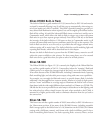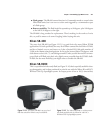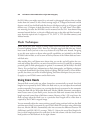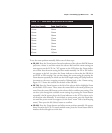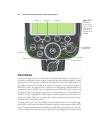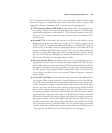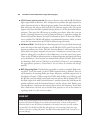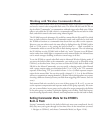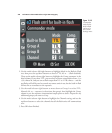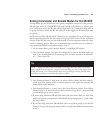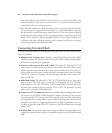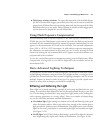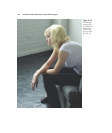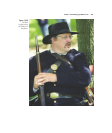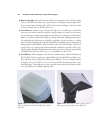
Working with Wireless Commander Mode
The D7000’s built-in flash can be set to Commander mode (as described in Chapter 9)
and used to control other compatible flash units. The Nikon SB-900 and SB-700 can
also be a flash “Commander” to communicate with and trigger other flash units. Nikon
offers a unit called the SU-800, which is a commander unit that has no built-in visible
flash, and which controls other units using infrared signals.
The SU-800 has several advantages. It’s useful for cameras like the D3s and D3x, which
have no built-in flash to function in Commander mode, and could also be used with
the D7000 to function as a commander that doesn’t have any effect on the exposure.
However, you can achieve much the same effect by dialing down the D7000’s built-in
flash to 1/128 power, or by setting the built-in flash to - - (flash cancelled) in
Commander mode to turn off the built-in flash during exposure. The real advantage
the SU-800 has over the D7000’s built-in flash is its “reach.” Because it uses IR illumi-
nation rather than visible light to communicate with remote flashes, the infrared burst
can be much stronger, doubling its effective control range to 66 feet.
To use the D7000 to control other flash units in Advanced Wireless Lighting mode, if
you want the built-in flash as the commander, you need to set it to that mode using
CSM #e3, as described next. Once you have set either the D7000’s built-in flash or the
SB-900 as the Master/Commander, you can specify a shooting mode, either Manual
with a power output setting you determine from 1/1 to 1/128, or for TTL automatic
exposure. When using TTL, you can dial in from –1.0 to +3.0 flash exposure compen-
sation for the master flash. You can also specify a channel (1, 2, 3, or 4) that all flashes
will use to communicate among themselves. (If other Nikon photographers are present,
choosing a different channel prevents your flash from triggering their remotes, and vice
versa.)
Each remote flash unit can also be set to one of three groups (A, B, or C), so you can
set the exposure compensation and exposure mode of each group separately. For exam-
ple, one or more flashes in one group can be reduced in output compared to the flashes
in the other group, to produce a particular lighting ratio of effect. You’ll find instruc-
tions for setting exposure mode, channel, and compensation next (for the built-in flash).
Setting Commander Mode for the D7000’s
Built-in Flash
Setting Commander mode for the built-in flash unit may seem complicated, but it’s
fairly easy once you’ve gone through it a few times. Here are the instructions you need.
1. Navigate to CSM #e3, and choose Commander Mode (see Figure 12.18).
Chapter 12 ■ Making Light Work for You 427



